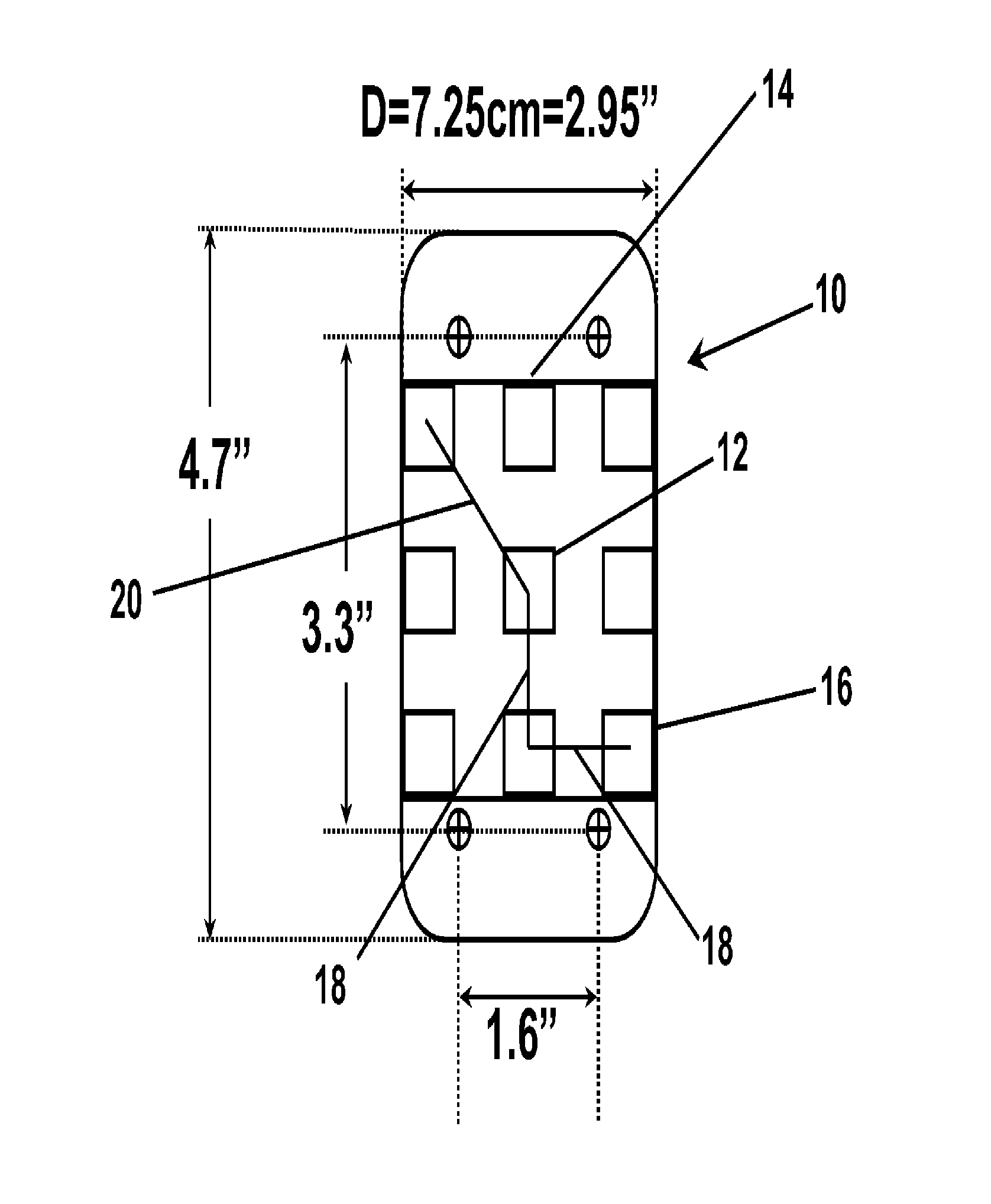Global navigation systems antenna
- Summary
- Abstract
- Description
- Claims
- Application Information
AI Technical Summary
Benefits of technology
Problems solved by technology
Method used
Image
Examples
case ii
terference / Jamming
[0112]With the baseline performance of the 127-element and 7-element CRPA characterized in a benign environment, an interference / jamming environment was then simulated. A wide variety of interference / jamming scenarios were simulated, and a representative scenario is addressed here. To illustrate the interference / jamming performance, a total of 5 narrowband interference / jamming sources were placed at the local horizon, and centered about the desired signal azimuth angle, 100 times the desired signal strength, spaced as illustrated below. The locations of the signals in spherical coordinates [0,0] were:
[0113]Sd(θ,φ)=[60,90] in units of [deg,deg]
[0114]J1(θ,φ)=[90,90] in units of [deg,deg]
[0115]J2(θ,φ)=[90,90−5] in units of [deg,deg].
[0116]J3(θ,φ)=[90,90+5] in units of [deg,deg]
[0117]J4(θ,φ)=[90,90−10] in units of [deg,deg].
[0118]J5(θ,φ)=[90,90+10] in units of [deg,deg]
[0119]When the MVDR beamsteering algorithm is subjected to the above scenario of signal and interfere...
PUM
 Login to View More
Login to View More Abstract
Description
Claims
Application Information
 Login to View More
Login to View More - R&D
- Intellectual Property
- Life Sciences
- Materials
- Tech Scout
- Unparalleled Data Quality
- Higher Quality Content
- 60% Fewer Hallucinations
Browse by: Latest US Patents, China's latest patents, Technical Efficacy Thesaurus, Application Domain, Technology Topic, Popular Technical Reports.
© 2025 PatSnap. All rights reserved.Legal|Privacy policy|Modern Slavery Act Transparency Statement|Sitemap|About US| Contact US: help@patsnap.com



